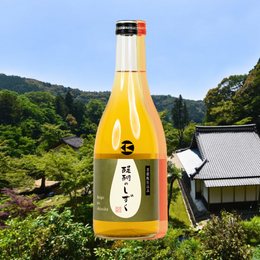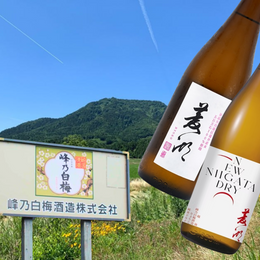Taste Testing Zenkuro ‘Space Dragon’ Barrel Aged New Zealand Junmai Ginjo From The Brewery That Put New Zealand On The Sake World Map

How is it really like to start a winery in New Zealand? The dream is familiar enough: an idealistic vintner—perhaps a corporate defector from Auckland or London–finds a plot of land in Marlborough, Hawke’s Bay, or Central Otago and envisions a winery and cellar door operation where visitors will swirl, sniff and sip their way through Sauvignon Blanc and Pinot Noir labels jockeying for attention.
Our corporate defector-turned-vintner would certainly apply his ex-consultant chops and begin with a market sizing analysis to segment the potential consumers. He’ll find that New Zealand’s wine producers thrive on the enthusiasm of two groups: the homegrown weekenders, Aucklanders and Wellingtonians taking the scenic hiking route in Otago while dropping in at a nearby cellar door, and the loyal local customer, the type to become an evangelist for their bottle of Pinot Noir with missionary zeal. Beyond them lies the ever-growing influx of international wine tourists. Australians, just a short flight away. North Americans and Britons, already enamored with New Zealand’s green, pristine image. Then there are the Chinese and Japanese visitors, drawn by the exoticism of a new-world winemaking frontier and increasingly attuned to the nuances of premium wine tourism.
Yet therein lies the rub. New Zealand, whose winemaking reputation is outsized relative to its population, already has more wineries than its residents arguably need. The challenge for any new entrant isn’t merely producing an exceptional wine—it’s convincing drinkers that they should care.

David Joll and his wife, Yasuko.

For New Zealand native David Joll, the answer to this conundrum was clear: he would make wine, but not of the grape variety– sake. David, who speaks fluent Japanese, majored in Japanese studies and spent years living in Japan was already running a New Zealand tourism company in that caters to Japanese visitors. And David saw an opportunity where others saw oversaturation. The concept of Made-outside-Japan sake still sounded like an oxymoron to most, and there was not one sake brewery in New Zealand. But why should the country’s choice wine-growing climate and bounty of pristine water be limited to Sauvignon Blanc?

Thus, along with his wife, Yasuko, and partners in his tourism business, Richard and Craig, David set out to establish New Zealand’s first sake brewery in an endeavour that is unusual, but for them, really makes a lot of sense. The same weekend travellers who pilgrimage to Otago for their wine-tasting fix might, they reasoned, would be just as willing if not more to stop for a flight of junmai sake at the country’s only sake brewery. The same Japanese tourists who arrive with an appetite for wine would be pleasantly surprised to find the familiar sake in a novel expression of New Zealand’s unique climate and waters.
The team settled on the name Zenkuro (全黒), a nod to the All Blacks, New Zealand’s national rugby team, whose legacy has made it national symbol of New Zealand.
But establishing a sake brewery in New Zealand back in 2015 was no easy feat. Education was a major hurdle. Many New Zealanders mistakenly believed that sake was a distilled spirit like tequila, rather than a brewed beverage closer to wine in its production and food pairing versatility. Even within the hospitality industry, Japanese restaurants were initially hesitant to feature a sake made outside of Japan. After all, sake is formally referred to as nihonshu (日本酒), which literally means "Japanese alcohol," reinforcing the perception that true sake could only be brewed within Japan’s borders.
David and his team doubled down on their persistence and an unwavering commitment to traditional Japanese methods. To ensure that their sake would be recognized for its authenticity, David and his team remained steadfast in their adherence to traditional Japanese brewing methods.
This commitment came with logistical challenges, particularly in sourcing essential ingredients. High-quality sakamai (sake rice) is typically grown to order for established Japanese breweries, making it difficult for an upstart brewery in New Zealand to secure a steady supply. Similarly, sake yeast was exclusively available to members of the Japan Sake Brewers Association, an organisation that historically did not extend membership to non-Japanese breweries.

Thankfully, through the right connections, Zenkuro secured a steady supply of Yamada Nishiki and Gohyakumangoku rice from Japan and, remarkably, became the first non-Japanese brewery to be accepted into the association.
Still, one critical component remained elusive—koji mold (Aspergillus oryzae), the enzyme-producing fungus essential for breaking down rice starches into fermentable sugars. At the time, koji-kin (koji spores) was not available outside Japan, forcing David to get creative.
He partnered with a local miso producer, Urban Hippie, understanding that the production of miso also relies on koji fermentation. After finding that miso koji was still not fully suitable sake brewing, David delved into a journey of self-education, researching and ultimately succeeding in cultivating his own strain of koji, allowing Zenkuro to maintain control over this vital element of the brewing process.
Once all the ingredients were in place, the brewing process could proceed in earnest. The fermentation mash at Zenkuro is slowly brewed over approximately 30 days at low temperatures using the kangen water filtration system which enables precise control over water purity and pH levels. After fermentation, the sake undergoes pressing, settling, racking, pasteurisation, aging, and blending with soft water sourced from New Zealand’s Southern Alps.

Traditional methods aside, Zenkuro’s unique advantage lies its location in Queenstown, a region with a cooler average temperature than most of Japan – quite similar to cooler northern Japanese prefectures like Niigata and Akita. This naturally lower temperature allows for controlled fermentation throughout the year. Interestingly, sake brewing in Japan historically only took placed during the cold winter months (shikomi) where the cooler temperatures are relied upon to slow fermentation and enhance flavour development. Queenstown’s climate, however, makes year-round brewing feasible.
Water also plays a significant role in shaping Zenkuro’s signature style. The soft water sourced from the Southern Alps imparts a rounder mouthfeel to the sake, contrasted with the drier, crisper profiles associated with harder water regions in Japan.

When it comes to pressing, Zenkuro also uses much more labour-intensive traditional approaches that most contemporary breweries have phased out. For certain batches, they employ the shizuku-shibori method, in which the moromi (fermented mash) is placed in cloth bags and allowed to drip naturally under gravity. This technique takes incredibly long and offers a very low yield, yet offers a refined, delicate sake prized for its purity and aromatic complexity. Additionally, Zenkuro utilises rock-weighted pressing, a low-tech but effective method that further differentiates their sake from industrially produced counterparts. The use of both techniques result in two distinct flavour profiles, giving Zenkuro’s sake a unique identity in the market. On the other hand, modern Japanese breweries have simply adopted modern hydraulic presses (yabuta) for efficient extraction.

Today, close to ten years after its founding, Zenkuro has expanded its production capacity more than tenfold from an initial output of 500 liters. It has a core lineup that consists of six sake expressions. This range includes the flagship Zenkuro Original Junmai which showcases the interplay of their twin pressing methods, and the premium Drip Pressed Shizuku Shibori Junmai Ginjo that offers a much more refined texture. At the top of the range is the Junmai Daiginjo made from Yamadanishiki and Gohyakumangoku rice polished down to 50%. The brewery also produces special limited-edition bottlings for select New Zealand restaurants, tailored to complement their dishes.
If New Zealand’s wine pioneers have taught the world anything, it’s that Kiwi producers have a remarkable ability to carve out a place for themselves on the global stage. With Zenkuro Sake, David and his team have once again done just that—proving that great sake can be made outside Japan, earning New Zealand a well-deserved spot for sake one bottle at a time.
I recently had the opportunity to taste one of the more unusual offerings from Zenkuro: the Zenkuro ‘Space Dragon’ Junmai Ginjo. This barrel-aged sake is a collaboration between Zenkuro’s David Joll and Koyama Wines's Takahiro Koyama, a Japanese winemaker crafting Pinot Noir and Riesling in Waipara Valley. It’s a fitting partnership I should say: a New Zealander making sake and a Japanese winemaker making New Zealand wine!
This Junmai Ginjo is made in Zenkuro’s Queenstown brewery before being subsequently aged in French oak barrels, previously used to mature Takahiro’s Pinot Noir. The name “Space Dragon” is derived from the Japanese characters in Takahiro’s name –宇 (space) and 竜 (dragon) – a rather clever and symbolic touch since this bottle was released in 2024 – the Year of the Dragon in the Chinese zodiac.
Let’s chase this dragon!
Zenkuro Takahiro Koyama ‘Space Dragon’ Junmai Ginjo – Review

Tasting Notes
Nose: Opens with a blend of vanilla and toasted almonds, quickly followed by a fragrant aromatic cedar wood note. Evolves towards toasted coconut flakes and a gentle caramel sweetness along with a subtle earthiness and umami of shiitake mushrooms grounding the sweeter aromas.
Palate: The immediate thought I had was the sake's luxurious texture – thick, honeyed, and almost viscous that coats the palate beautifully. Vanilla and toasted coconut from the nose reappears on the palate, along with an interesting minty note and clove spice. The core flavours are rich and creamy, with notes of custard, ripe soft banana, a drizzle of honey some yellow orchard fruits, like a ripe golden apple adding some fruity dimensions though maintain great balance without veering into cloying sweetness. The custard-like richness reminds me of a lightly oaked Chardonnay.
Finish: Not particularly long, but leaves a pleasant, dry warmth at the back of my throat.

My Thoughts
A delicious and memorable expression of a Zenkuro Sake – marries the refined texture and fruity profile of a Ginjo with the added honey richness and subtle spice imparted by the French oak. The French oak does a great job here, adding a layer of complexity and structure that makes this feel more complete, while still retaining Zenkuro's signature smoothness and a subtle umami presence that lingers in the background.
My Score: 8
|
Score/Rating Scale :
|

@CharsiuCharlie







